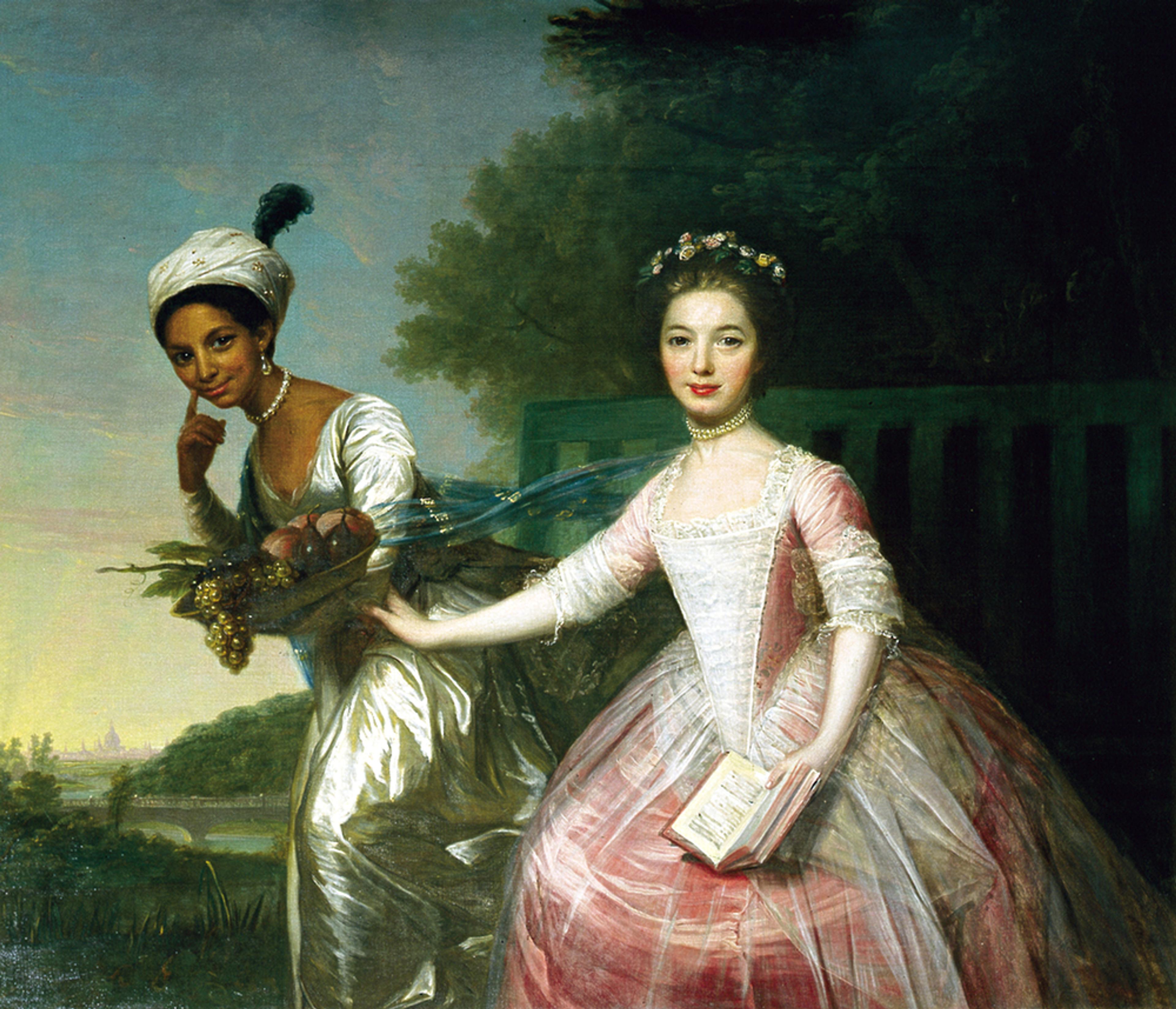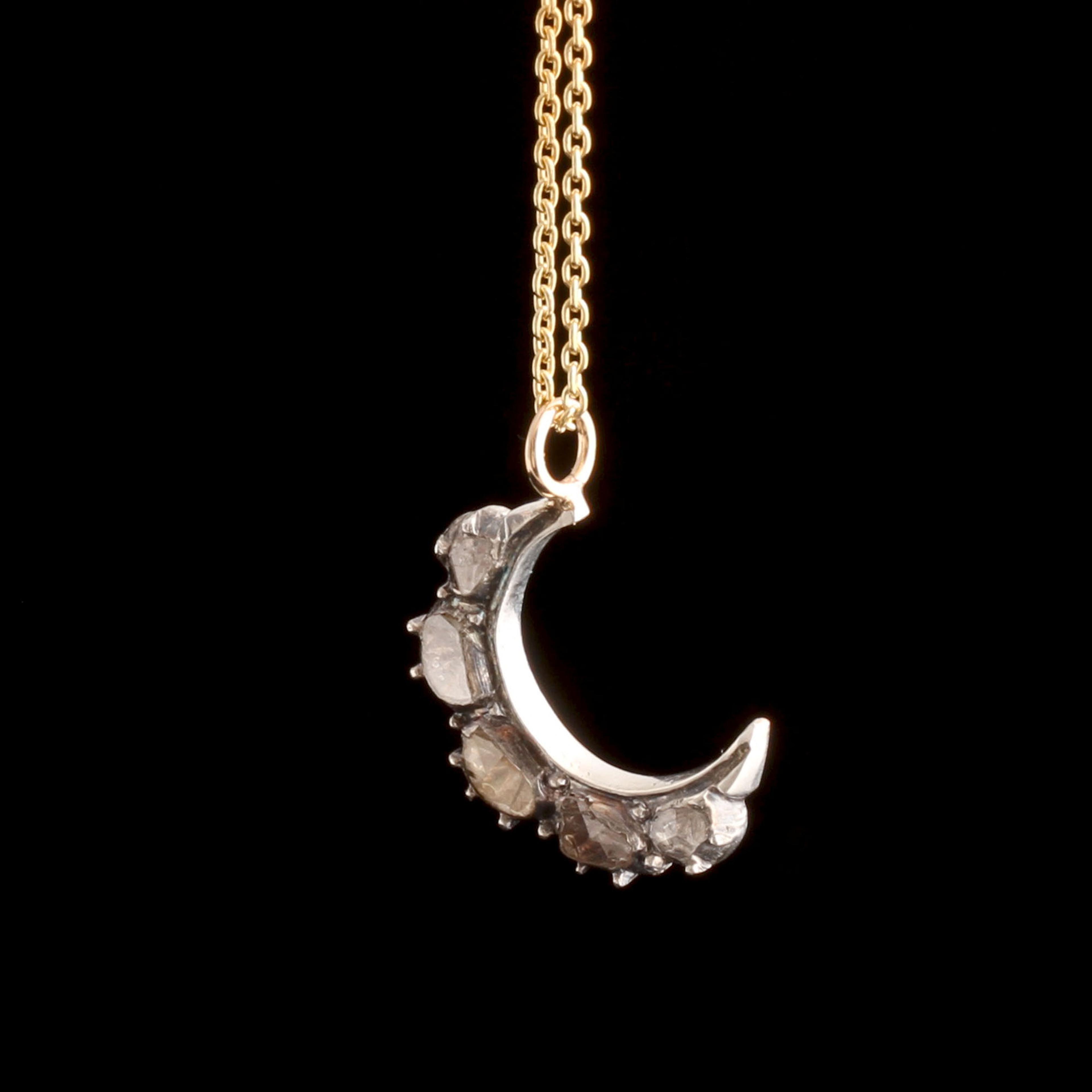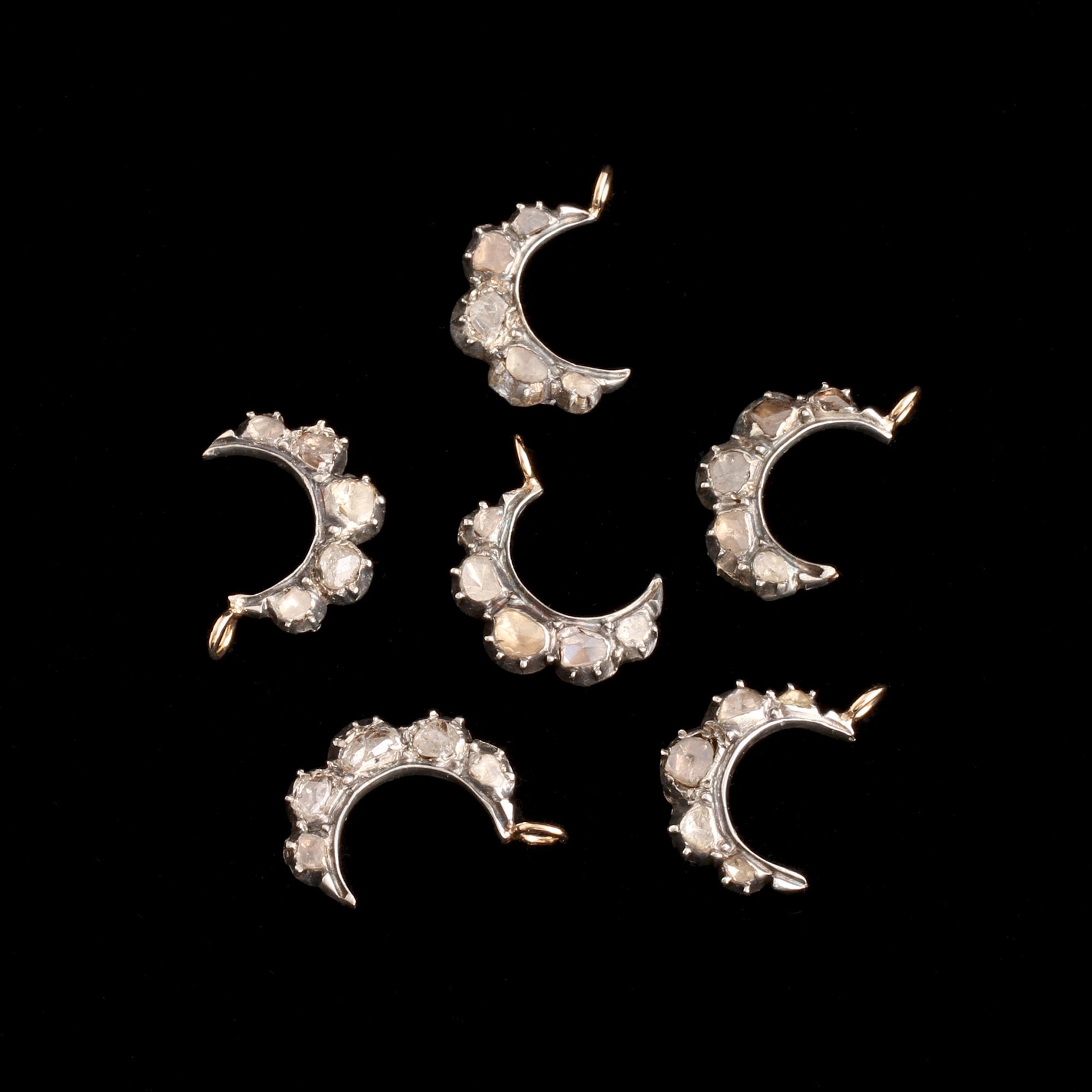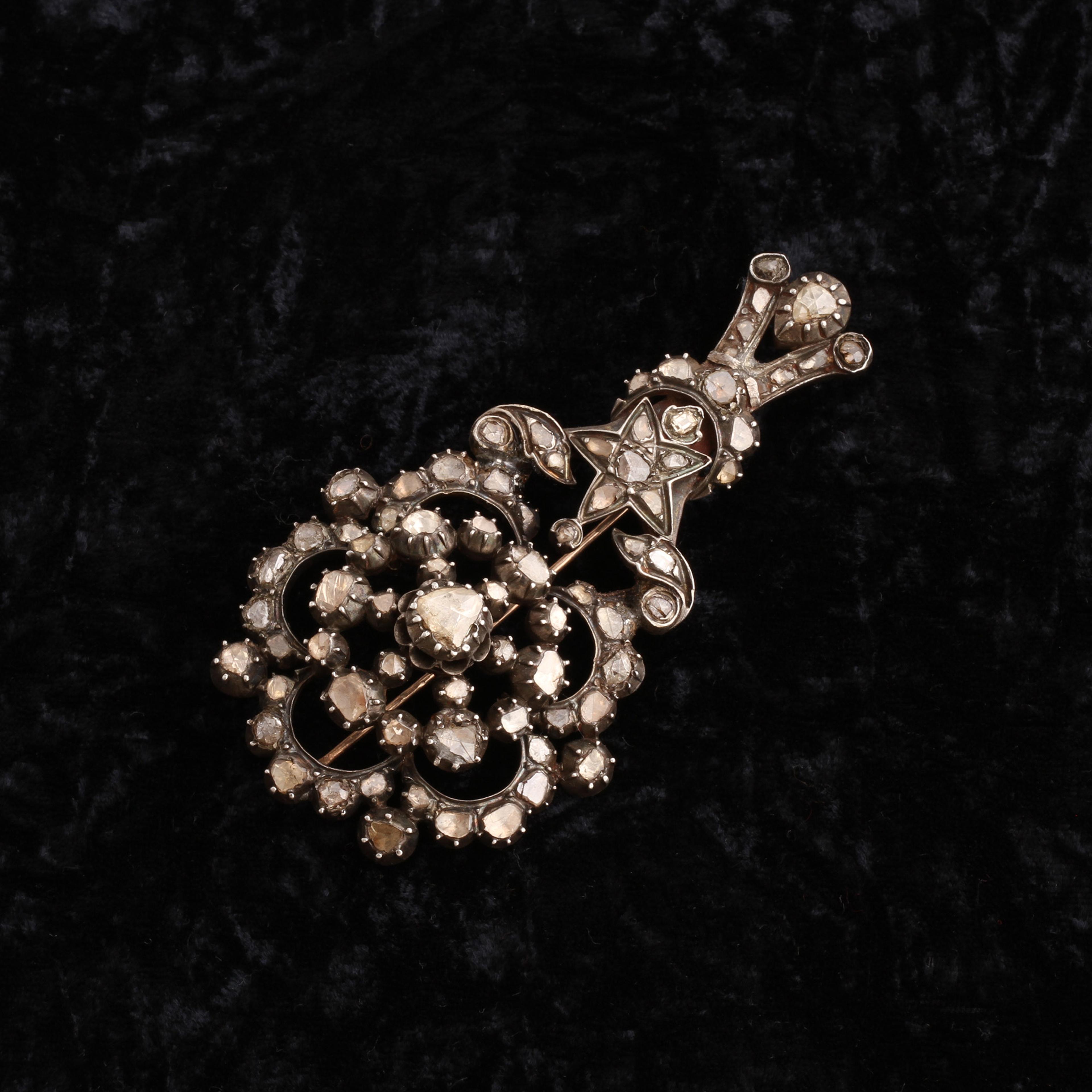Six crescent moon shaped pendants are available, all made with gold-washed silver settings holding chunky rose cut diamonds. To make these, we took apart a massive Halley's Comet commemorative brooch from 1835. At almost four inches long, it was dramatic, but not so wearable. Also, unskilled structural work had been done to the back of it, causing a lot of ugly damage. We would never disassemble a pristine antique jewel, but this brooch was falling apart; it was time for it to be reborn. Luckily, the star and moon shapes we managed to pull from it stay in line with the celestial theme. They carry the astronomical vibes of the original piece. (See it by scrolling to the last detail image.) As was typical for Georgian jewelry, the collet-set stones are backed with silver foil to highlight their sparkle and whiteness. To prevent the silver from tarnishing against the skin, jewelers of the era applied a thick layer of rosy gold - known as a "wash" - to the back, serving as a barrier.
thedetails
- Materials
silver with gold wash, rose cut diamonds, new 14k gold findings and chain
- Age
c. 1835
- Condition
Very good - these pendants were formerly elements of a large comet brooch
- Size
7/8" length including the bale, 18" chain
Need more photos?
Send us an email to request photos of this piece on a model.

Aboutthe
GeorgianEra
1714 — 1837
As imperialist war raged in the Americas, Caribbean, Australia, and beyond, the jewelry industry benefited: colored gems from all over the empire became newly available. A mix of artistic influences from around Europe contributed to the feminine, glittering jewels of the era. Dense, ornate Baroque motifs from Italy showed up in Georgian jewelry, as did French Rococo’s undulating flora and fauna. Neoclassical style made use of Greek and Roman motifs, which were newly popular due to the recently uncovered ruins of Pompeii and Herculaneum. Lapidary methods improved: the dome-shaped rose cut was popular, as was the “old mine cut,” a very early iteration of today’s round brilliant cut.
The boat-shaped marquise diamond cut was developed around this time, supposedly to imitate the smile of Louis XV’s mistress, the marquise de Pompadour. Paste — an imitation gemstone made from leaded glass — was newly developed in the 18th century, and set into jewelry with the same creativity and care as its more precious counterparts. Real and imitation gems were almost always set in closed-backed settings, lined on the underside with thin sheets of foil to enhance the color of the stone and highlight it's sparkle. This makes Georgian rings tough for modern women to wear, especially on an everyday basis: genteel, jewelry-owning ladies of the 18th century were not famous for working with their hands like we are. Nor did they wash their hands as much as we do. Water will virtually ruin a foiled setting, so take special care with your Georgian ring. Very little jewelry from this period is still in circulation, and it's very difficult to repair.
please note:Terms of Sale
Antiques can be returned unworn and in original condition within 10 days of delivery for an exchange or refund minus the cost of shipping. Once a piece has been altered, including ring re-sizing, it is FINAL SALE.




